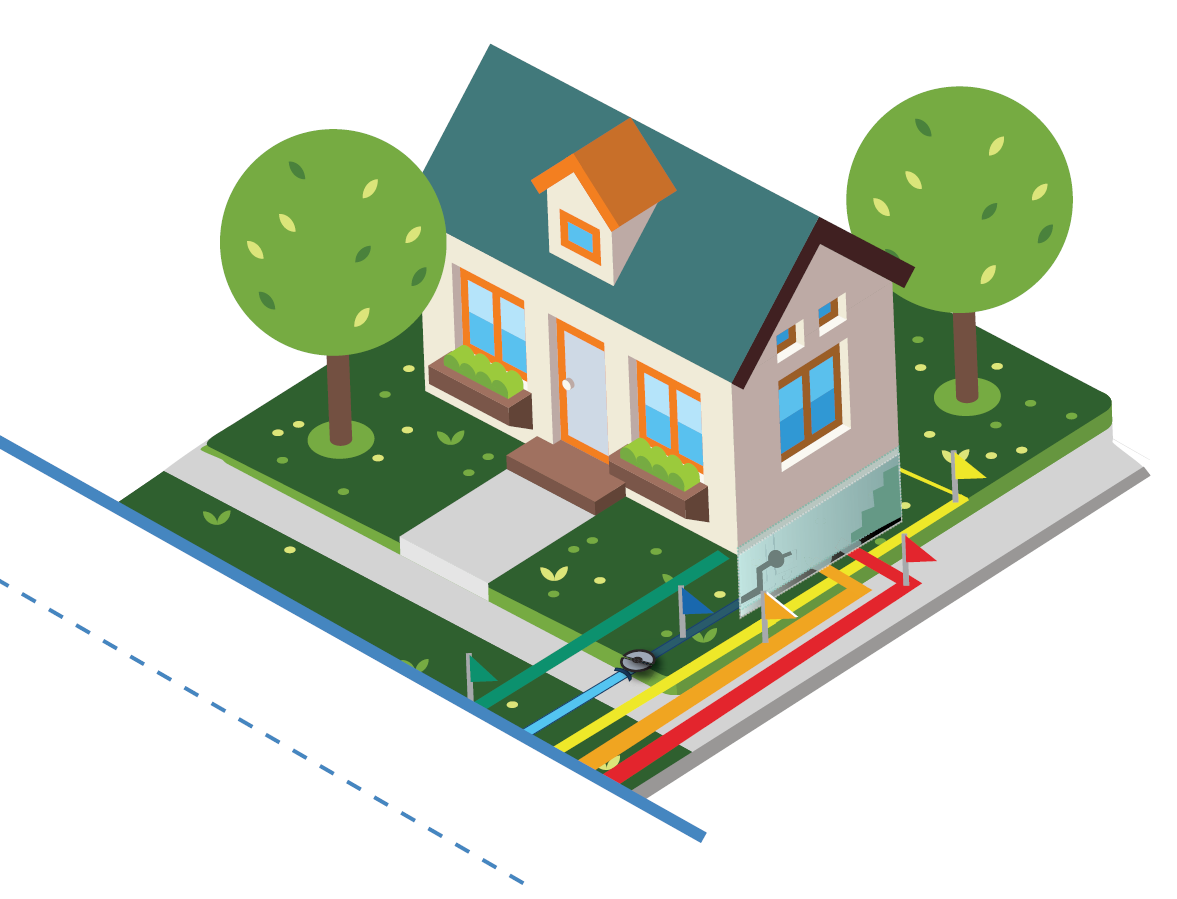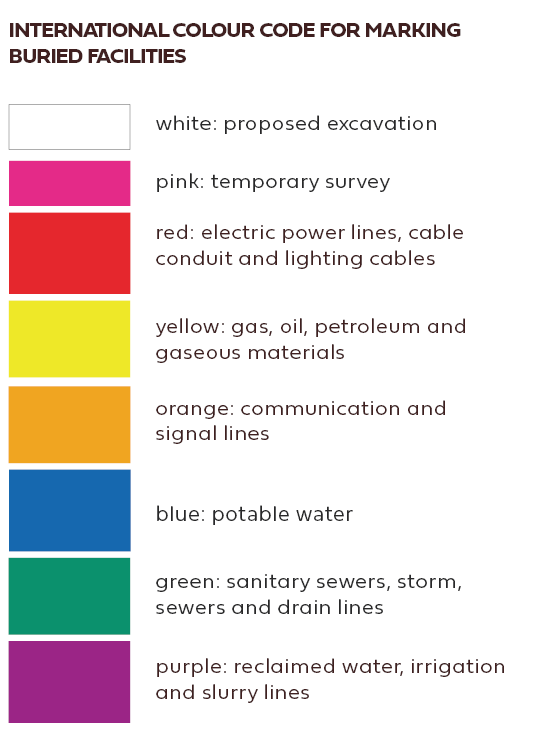Know what’s below
Before you start digging, it’s essential to locate underground utilities to prevent damage, protect yourself and keep your community safe.
Submit your locate request
Digging safely - Excavation guidelines for working within buried utilities
If you’re planning a project that involves digging — big or small — it’s your responsibility to work safely around Cochrane’s underground infrastructure, including potable water lines, sanitary sewers and storm sewers.
Why it matters:
- prevent injuries and avoid costly property damage
- avoid service disruptions to water, sewage or other utilities
- stay compliant with safety regulations and Cochrane bylaws
What you need to know:
- before you dig, make sure you’ve covered all the bases
- excavators must comply with all relevant legislation and safety regulations (that includes any agreements or contracts with utility owners)
- before starting your project, obtain all municipal approvals, crossing agreements and proximity agreements as needed
- utility owners reserve the right to change their procedures and processes regarding their infrastructure and networks.
- check for updates before you begin
Why you need a permit
Permits are the result of years of experience, testing and feedback. Having proper permits helps ensure the proposed project is safe and in line with Cochrane bylaws and other applicable legislation.
When planning a construction project, start with a Town of Cochrane permit application.
Development permits
Civil Land Development
403-851-2284
Building permits
Safety Codes and Inspections
403-851-2572
Before you dig
When working within buried utilities, practicing safe ground disturbance is critical to avoiding personal injury, costly damage and service disruptions.
- Request a utility locate through Utility Safety Partners. Make sure your work stays within the defined area in your request.
- Review locate documentation and markings and contact our Operations department if there’s a mismatch between field markings and your locate documents.
- Prepare the work area and set up barricades around your excavation area. They must be in place during work and while the site is unattended.
- Before using mechanical equipment, expose utilities by hand or hydro-excavation to confirm the exact location and depth.

Excavation requirements
- Only use mechanical excavation equipment with a spotter.
- Keep at least 0.3 metres (one foot) away from exposed infrastructure when digging with machines. The use of a toothless bucket is recommended.
- Place supports along the entire length of the area to prevent collapse when trenching parallel and close to buried facilities.
- Backfill with clean granular material around exposed utilities — do not use specialized tamping equipment directly on exposed infrastructure.
Responsibilities of the excavator
- After your locate request is completed, the locator will mark infrastructure with coloured paint, flags and/or stakes:
- Blue is for water.
- Green is for sanitary and storm sewers.
- You’ll receive a locate request completion document along with any other supporting documents.
Excavators are responsible for reviewing the locate request and ensuring it matches the field markings on the site.
- Before beginning excavation, compare markings to the locate request document.
- If there are discrepancies between the locate request field markings and the locate request document, contact our Operations department.
- Keep all locate markers in place during excavation.
Locate request limits
- Most locates are valid for up to 30 calendar days, or 60 calendar days for larger projects with written agreement.
- All excavation must take place within the defined work area, and locate markers must be maintained by the excavator.
- If the ground disturbance is not completed within the maximum time frame or markings are removed or damaged, the excavator must submit a re-locate request.
Exposing buried infrastructure by hand
- Hand digging is required within one metre of any locate marker.
- Use dull-edged or rounded shovels — do not probe for buried infrastructure with pointed tools such as bars or pick axes.
- Never use your entire body weight on the shovel while hand digging.
- Dig at an angle so that any contact with infrastructure would be a glancing blow rather than a direct hit.
- Approved hydro-excavation may be used as an alternative to hand-digging and must only be conducted by qualified operators.
Related links
- City of Calgary detailed construction guidelines
- Alberta Safety Codes
- National Building Code of Canada
- Cochrane Land Use Bylaw 01/2022



